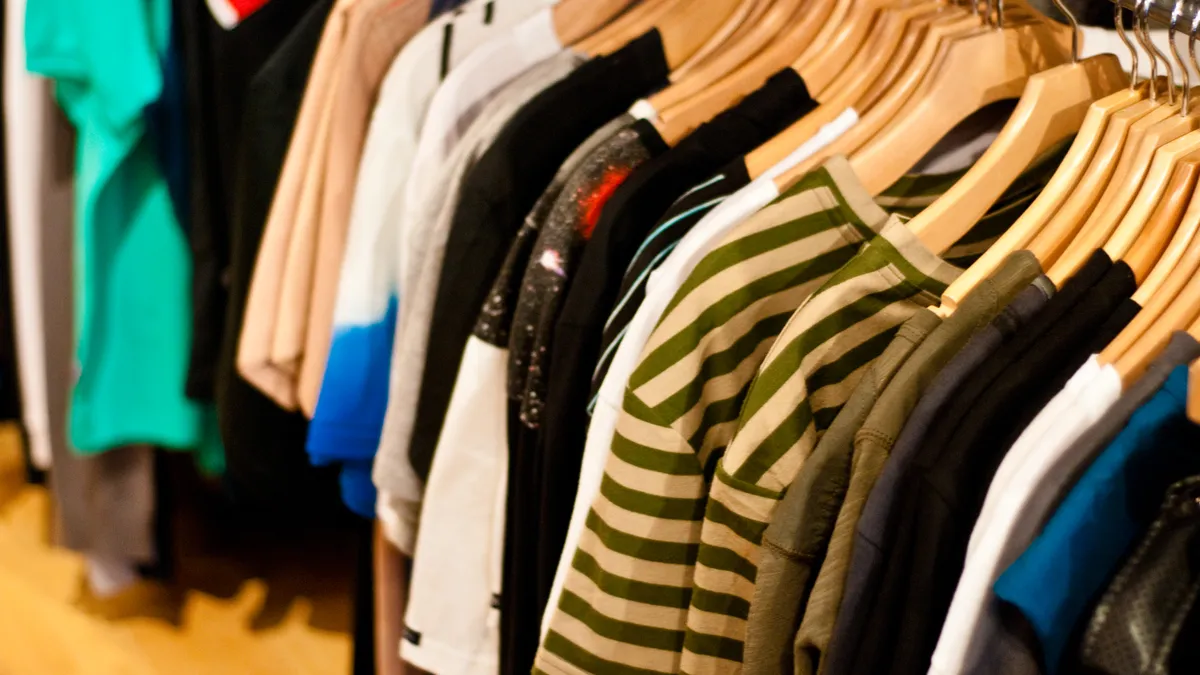Dive Brief:
-
Online apparel sales accounted for 27.4% of overall U.S. apparel sales last year, up from 23.5% in 2016 and 20.7% in 2015, according to the most recent Internet Retailer Online Apparel Report published last week.
-
Apparel retailers dominated Internet Retailer’s 2018 Top 1000 list with 266 (more than any other category) making the list. That doesn’t include mass-merchant giants like Amazon (number one on that list) and Walmart (number three).
-
Many consumers say they like buying apparel online: 43.2% of respondents to a February survey of 2,535 U.S. consumers by PYMNTS.com said they prefer to shop for clothing in stores, while 26.9% prefer to shop only online and 29.9% said they prefer to shop both. But other research has found that more shoppers want to "try before they buy" clothing online.
Dive Insight:
Amazon is contributing to the rise of apparel e-commerce thanks to its expanding private label lines and services like its now widely available Prime Wardrobe try-before-you-buy service. But it's also getting a major boost from specialty retailers that traditionally sell through stores.
Internet Retailer notes that Children’s Place, which stands at number 113 on its Top 1000 list, is in the midst of a $50 million "digital transformation" that involves 100 initiatives including in-store Wi-Fi, click-and-collect services, no-minimum free shipping and in-store mobile checkout.
Gap, American Eagle, Abercrombie & Fitch and other apparel brands are investing in digital sales too. Gap and Target have introduced apparel subscriptions for kids, and online styling service Stitch Fix is challenging those legacy players with its own new initiatives, including lingerie sales and extended sizes and sales to kids.
Macy’s — number six on Internet Retailer's list and the biggest online apparel retailer — also has plans to redesign its online and mobile experience this year, according to Internet Retailer's report.
But delivery expenses of online goods are hitting margins. Many shoppers buy multiple items with the intent to return some of them (especially when it comes to apparel and home goods), according to research from post-purchase solutions firm Narvar. On average, 40% of shoppers do so at least occasionally, with 45% of those under 30 and 48% of those with incomes over $100,000 indulging in the practice. Apparel is returned most often (43%), according to the survey of nearly 700 shoppers.
Meanwhile, the value of retail returns last year rose 53% from 2015 to $400 billion, and the growth of e-commerce is stoking that, according to returns and overstock supply company B Stock. Returns of brick-and-mortar purchases tend to hover at 8%, while e-commerce returns can reach as high as 15% to 30%, according to CBRE, which says that likely value of online holiday returns is $32 billion, up from 2016's estimated $28 billion.














